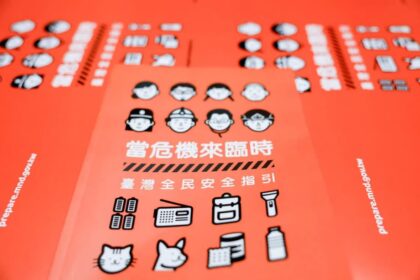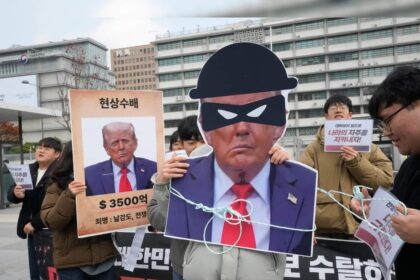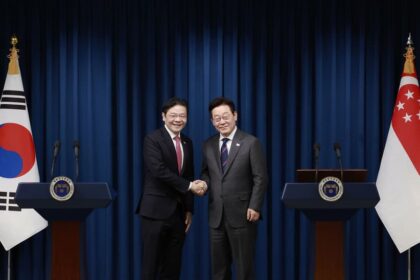A record wave of bids meets a changing Japan
Japan is on pace to set a new high this year for foreign takeover approaches. By the end of August, overseas buyers had lodged 157 proposals to purchase or gain control of Japanese companies. The current run rate would surpass last year’s record of 193 attempts, a clear sign that global buyers see a more open and attractive market. The surge sits at the intersection of policy changes in Tokyo, a weaker yen that makes targets cheaper in foreign currencies, and a multiyear effort to raise returns for investors.
- A record wave of bids meets a changing Japan
- What changed in Tokyo policy and corporate governance
- The yen discount and the valuation gap
- How boards and regulators are handling bids
- Politics and security lessons from the Nippon Steel case
- Sectors drawing interest in 2025
- What foreign buyers need to navigate
- Who gains and who worries
- Key Points
Two years ago, the Japanese government issued guidance that pushed listed companies to give sincere consideration to acquisition offers. Boards were told not to dismiss bids simply because they did not suit incumbent executives. That statement, backed by updated guidance on takeover defenses and fair M&A practices, marked a cultural shift. Friendly transactions still dominate, yet unsolicited bids by foreign buyers are no longer taboo. Large investors have also intensified engagement on capital efficiency, which makes boards more responsive when a credible buyer knocks.
The currency picture is a powerful catalyst. With the yen trading about 11 percent below its five year average, a bidder funding an offer with dollars or euros can pay a premium for shareholders and still find the deal affordable. Valuations add to the appeal. Asset managers point out that a large share of listed firms still trade below book value, and some see scope for operational improvements under new ownership. Research from global fund houses also says that hostile takeovers by foreign firms are slowly gaining traction in Japan in 2025, a sharp contrast with the long period when such tactics rarely worked.
Not every proposal ends in a completed deal. The volume of approaches matters because it signals that the market is open for discussion. A higher number of credible bids can empower independent directors to test value, run competitive processes, or negotiate better terms for investors and employees.
What changed in Tokyo policy and corporate governance
Policy makers have rewritten parts of the playbook. In 2023 the Ministry of Economy, Trade and Industry and the Ministry of Justice refreshed guidance on corporate takeovers and defense measures. The updates discouraged blanket poison pills that entrench management, urged boards to engage with bidders and shareholders on the merits of an offer, and set expectations around fair process, disclosure, and independent oversight. That guidance sits alongside revisions to the Corporate Governance Code and the Tokyo Stock Exchange initiative that asks companies to improve capital efficiency, especially when price to book ratios sit below 1.
Foreign buyers also face a screening system, and the rules are better understood today. Japan’s foreign exchange and foreign trade act (FEFTA) requires prior notification for investments in sensitive sectors such as defense, critical infrastructure, energy, telecommunications, and certain technologies. Reviews focus on national security and public order. Most applications clear in a few weeks with conditions when needed. The process is more predictable than it once was, which makes bidders more willing to table an offer and start talks early with authorities.
At the same time, the government is actively courting productive foreign direct investment. The Ministry of Foreign Affairs highlights a national target to reach a 100 trillion yen balance of inward FDI by 2030 and has created an FDI Task Force across major embassies, linked closely with JETRO and the J Bridge program, to help companies navigate entry and partnership in Japan. Official materials describe a unified effort to improve rules, connect foreign managers with local networks, and support investment projects through seminars and tailored assistance. Details are available on the Ministry of Foreign Affairs website at mofa.go.jp.
The yen discount and the valuation gap
Currency movements shape the math on every cross border deal. The yen’s slide against the dollar and the euro deepens the pool of potential buyers by making Japanese equity and assets look cheaper in foreign currency terms. When a company is valued at ten times operating profit in yen, a dollar based buyer may perceive a lower multiple after the exchange rate adjustment. The arithmetic can create room to pay a premium to local shareholders and still expect attractive returns.
Valuation levels and balance sheet strength are the other magnets. Many listed companies hold significant cash and securities, sometimes more than immediate business needs. That conservative posture is changing as boards accelerate buybacks and investment, yet it still leaves scope for consolidation or carve outs. Investors also focus on price to book ratios and return on equity, two measures where reforms aim to push persistent low performers to improve. Foreign strategic buyers and private equity firms view that gap as an opportunity to deploy capital with a clear playbook.
How boards and regulators are handling bids
Company responses are more structured than in the past. Independent directors are now a standard feature on listed company boards, and many have standing protocols for unsolicited bids. When an approach arrives, boards often form a special committee of independent directors, hire external advisors, and run a market check. Boards are also more careful to articulate how an offer compares with the company plan, including any existing transformation plan requested by stock exchange guidance.
How FEFTA screening works in practice
Most inbound bidders first map the target’s operations against the list of restricted industries, then engage in informal dialogue with the relevant ministries before filing formal prior notification. Reviews may attach behavioral conditions to protect sensitive technology or supply chains. In extreme cases, the government can ask a buyer to alter deal terms or withdraw. For businesses outside sensitive lists, reactive post investment notification is often sufficient. The clarity of this process has helped bidders plan timetables and reduce surprises.
Defense measures and independent oversight
Japan still has poison pill style defenses in some companies, often framed as large scale purchase rules, but regulators have warned against tactics that only protect managers. The 2023 guidance asks for shareholder centric procedures, credible threat assessments, and time limited measures. Courts have backed boards that follow thoughtful processes, and have questioned managers who deploy blanket defenses without clear rationale. Independent committees and transparent reasoning now carry more weight when a board recommends accepting or rejecting a bid.
Politics and security lessons from the Nippon Steel case
Cross border M&A rarely unfolds in a vacuum. The debate around Nippon Steel’s purchase of U.S. Steel shows how politics, national security, and jobs can shape outcomes. After months of uncertainty, the United States approved the deal in June 2025, subject to a national security agreement that included a golden share for the U.S. government, leadership requirements, and a commitment to invest billions. The case illustrates how governments can clear strategic deals while retaining tools to manage sensitive risks.
That episode involved a Japanese buyer in the United States, not an overseas buyer in Japan, yet the lesson is still relevant. Stakeholders will scrutinize any bid that touches critical technologies or infrastructure. Conditions, remedies, and ongoing oversight are part of the modern cross border M&A tool kit. For readers who want the official analysis of the U.S. decision, the Center for Strategic and International Studies offers a detailed explainer at csis.org.
Sectors drawing interest in 2025
Industrial technology and precision manufacturing attract steady attention. Overseas acquirers value Japanese know how in machine tools, factory automation, sensors, and materials. Specialty chemicals and components that anchor global supply chains also stand out. Foreign buyers often seek platform positions where a Japanese brand or technology can scale through global distribution.
Healthcare and life sciences are active, especially in niches like medical devices, contract development and manufacturing, and diagnostics. Logistics, software for enterprise customers, and business services that benefit from digital adoption have also drawn bidders. Consumer brands with durable domestic demand can appeal to regional buyers from Asia and global consumer groups. Real estate related assets, including hospitality and data centers, feature in investment theses tied to tourism and cloud growth, though those deals often use partnership structures rather than full corporate takeovers.
What foreign buyers need to navigate
Preparation and respect for stakeholders improve the odds of success. Buyers who engage early with management and independent directors, articulate a clear plan for employees and customers, and show sensitivity to corporate culture find it easier to open doors. Japanese firms often prize stability, quality, and long relationships with suppliers. A thoughtful integration plan that preserves these strengths can make a bid more credible.
Communication matters beyond the boardroom. Company unions, local governments, and key clients will look for assurances on jobs, product quality, and investment plans. Formal tender offers require careful translation, legal notices, and timely disclosure under Japanese rules. Experienced advisors can help tailor the deal structure, whether it is a tender offer followed by a squeeze out, a share exchange, or a carve out of a non core division.
Financing and currency choices also warrant planning. Interest rates and credit markets shape the cost of capital. Currency hedging can protect expected returns when cash flows are in yen but financing is in dollars or euros. Tax and accounting differences can affect both price and structure. Many buyers conduct stand alone diligence on environmental and product safety compliance given Japan’s emphasis on quality control.
Who gains and who worries
Shareholders have already seen tangible effects. The credible threat of a takeover can push boards to undertake buybacks, spin off underperforming assets, or accept joint ventures that unlock value. Foreign owners can bring capital and know how to accelerate growth and international expansion. Employees can benefit when new owners invest and broaden markets for products and services.
There are also clear concerns. Labor groups and local officials worry about factory closures or cost cutting that undermines communities. Security experts focus on protection of sensitive data and technology. Policy makers must balance an open welcome for productive capital with safeguards in strategic sectors. That balancing act is at the heart of the current surge, which is why process quality, transparency, and early engagement are so central.
Key Points
- Foreign buyers made 157 takeover proposals by the end of August, on pace to exceed last year’s record of 193 approaches.
- Guidance since 2023 urges boards to consider credible bids on the merits, discouraging reflexive rejection that protects incumbent managers.
- The yen is about 11 percent below its five year average, making Japanese targets more affordable for dollar and euro based acquirers.
- Japan seeks 100 trillion yen of inward FDI by 2030, with support programs run by MOFA, JETRO, and J Bridge.
- FEFTA screening governs sensitive sectors, and most reviews clear with conditions and predictable timetables.
- Hostile tactics are gaining limited traction, while friendly deals remain the norm as boards engage more actively.
- The Nippon Steel and U.S. Steel case shows how governments can approve strategic deals with conditions such as a golden share.
- Active targets include industrial technology, specialty chemicals, healthcare, logistics, software, consumer brands, and certain real estate related assets.
- Successful bidders plan for stakeholder engagement, regulatory compliance, financing strategy, and careful integration to protect core strengths.












